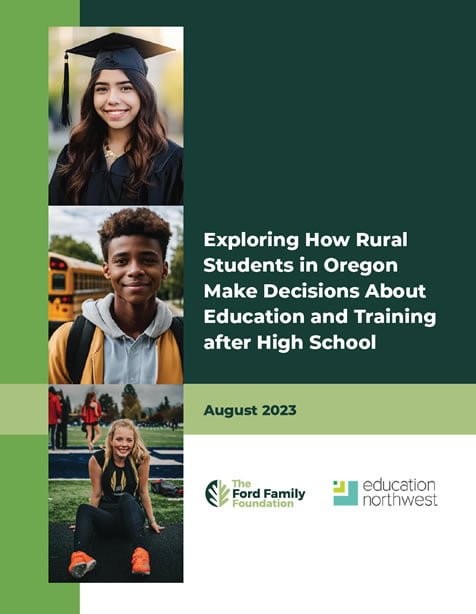Published August 2023 | RESEARCH and PUBLICATIONS
Exploring How Rural Students in Oregon Make Decisions About Education and Training after High School
This study builds on a previous study conducted by The Ford Family Foundation and Education Northwest, “Supporting Rural Students in Oregon in High School and Beyond.”
That study relied on student-level quantitative data and found that rural students in Oregon had lower rates of college enrollment, persistence, and completion than nonrural students and that this pattern held across student groups.
In the graduating class of 2018–19, only 42 percent of rural students enrolled immediately in college after high school, compared to 56 percent of nonrural students.
To gain a deeper and more nuanced understanding of why and how rural high school students make decisions about life after high school and choose certain pathways, it is essential to examine these more asset-based factors and to hear directly from rural students and the adults who support them.
This study fills that gap. Education Northwest conducted interviews and focus groups with 53 participants, including rural high school seniors and their parents/caregivers, rural high school staff members, college students from rural upbringings, and college staff members who support and work with rural students.
The study focuses on 10 rural high schools in Oregon including two schools from Southern Oregon, two from Central Oregon, one from the Metro region, three from Valley North Coast, and two from Eastern Oregon.
We also consulted an advisory group of four rural high school staff members, four college staff members who support rural students, and one college student from a rural community. The advisory group provided feedback on the research plan, study protocols, outreach and recruitment efforts, and framing of the study findings.
DOWNLOADABLE MATERIALS
» Full report PDF

